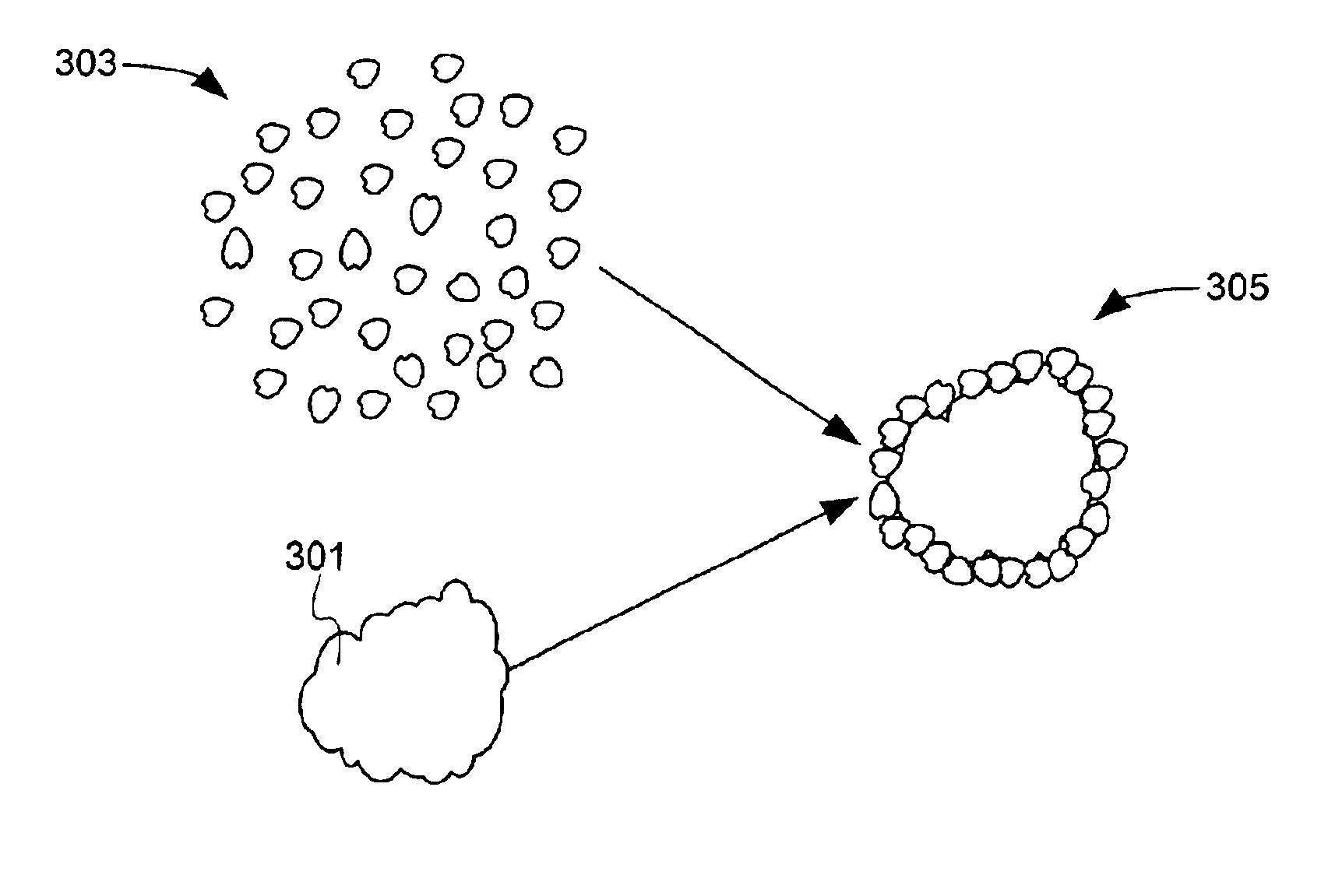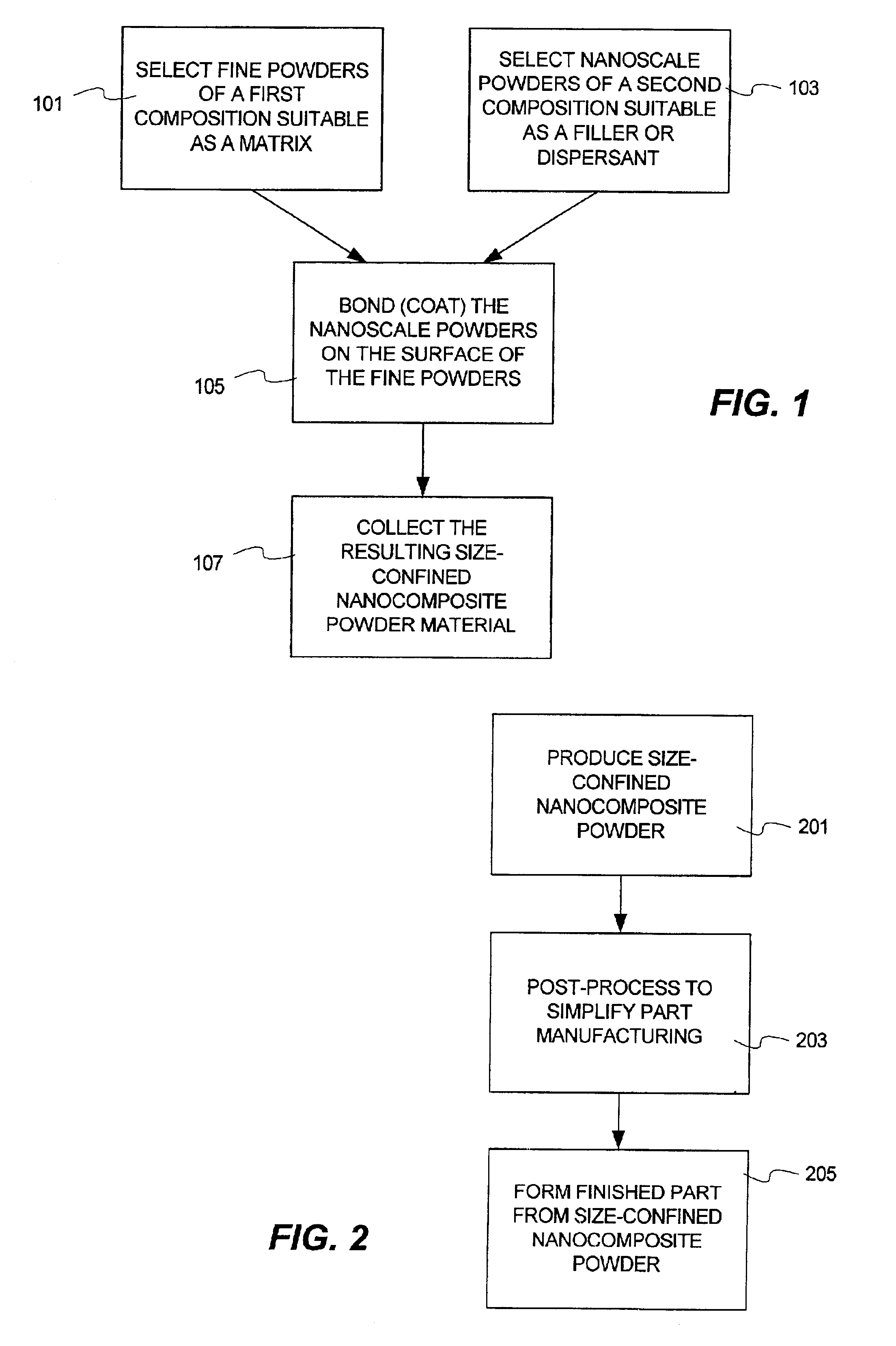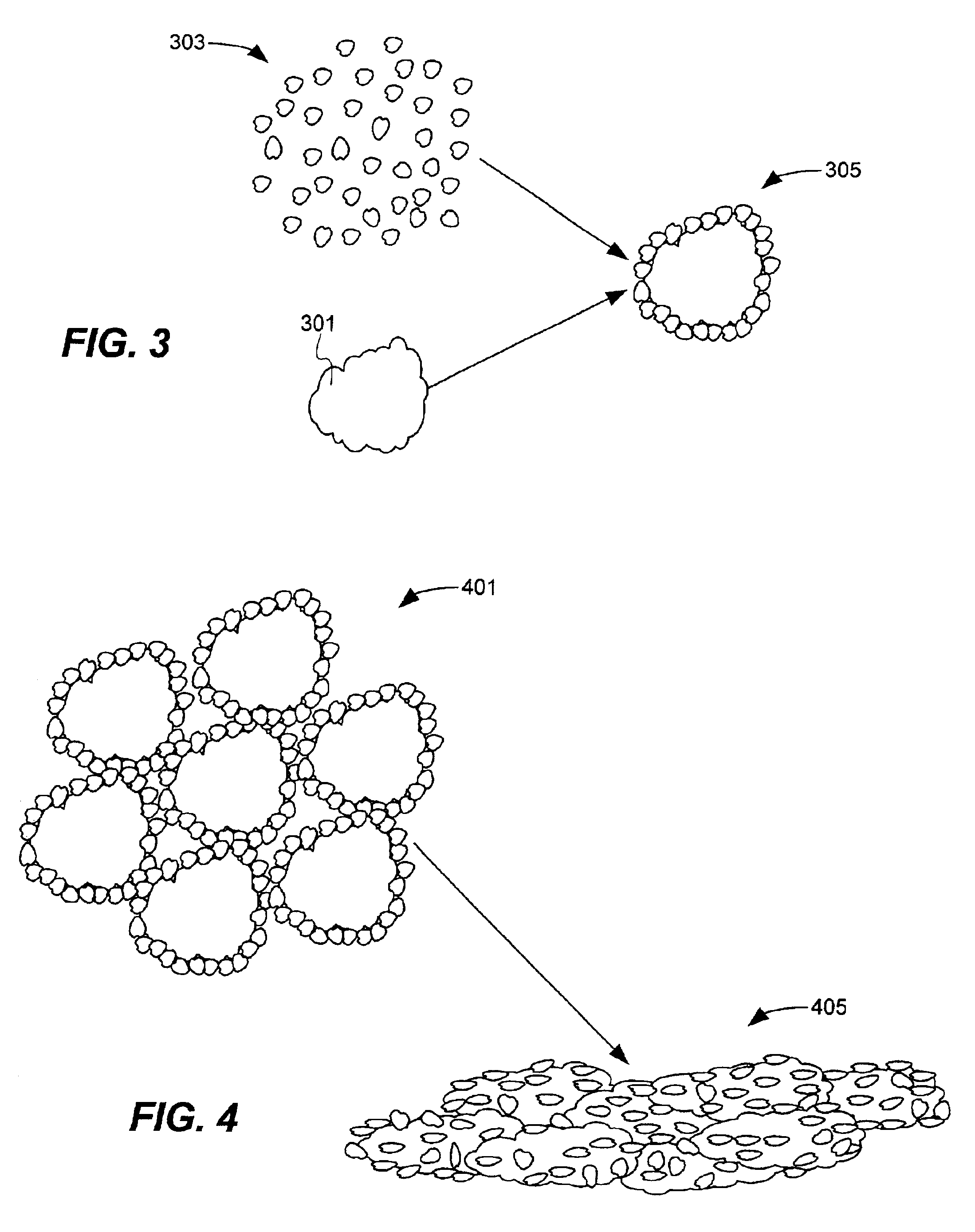Methods for producing composite nanoparticles
a nanoparticle and composite technology, applied in the field of nanotechnology, can solve the problems of large size confinement, poor bonding at interfaces, and production defects, and achieve the effect of improving the performance of constituent materials
- Summary
- Abstract
- Description
- Claims
- Application Information
AI Technical Summary
Benefits of technology
Problems solved by technology
Method used
Image
Examples
example 1
Dispersion Strengthening of Materials
Dispersion strengthening is a method to increase the strength of metal alloys by incorporating a fine distribution of hard particulates. This method takes advantage of the fact that dislocation motion is hindered by the presence of the fine particulate. This can be quantified by the following equation:
π=Gb / λ
where τ=stress to force a dislocation through the particulate, G=shear modulus, b=Burger's vector, λ=spacing between particulate.
One of the primary variables in this equation (for a given chemistry) is the spacing between the particulate. This spacing can be reduced by decreasing the size of the particulate, giving a resultant increase in the shear strength for a given volume fraction of particulate. By decreasing the size of the particulate, the total mass and volume of particulate in the composite need not change. In this manner, valuable properties of the matrix material are expected to remain constant or be improved by decreasing the size ...
example 2
Superior Performing Plastics
Mineral fillers are commonly used in plastics to lower cost or to enhance performance of the plastic. These mineral fillers are often nanoscale powders, submicron powders or fine powders (e.g., calcium carbonates, fumed silicas, carbon black, tale). Everything else remaining same, the shape, the size, and the concentration of mineral filler addition determines the performance the filler-filled plastic. However, an outstanding problem has been the ability to homogeneously distribute nanostructured or submicron mineral fillers as these fillers have tendencies to agglomerate. Another issue is the bonding of the filler interface to the polymer. These reasons, in part, have limited the commercially achieved performance of filled polymers.
To fully appreciate the relevance of nanotechnology to plastics, consider the constitutive equation for tensile strength of a polymer,
σB˜k(Eγ / a)1 / 2
where,k: geometric constantE: Young's modulus of the materialγ: fracture energy...
example 3
Superior Performing Ceramics, Metals and Alloys
As in example 2, nanoscale fillers can also be used with ceramics, metals and alloys to form superior performing materials. The constitutive equation presented in example 2 applies to other compositions of matter with the modification that many compositions do not experience plastic flow and therefore fracture energy has to be replaced with surface energy per unit area or other suitable quantity.
The superior performing ceramic or metal or alloy can be achieved as follows. Produce powders of desired composition of average size less than 50 microns, preferably less than 5 micron, more preferably 0.5 micron, and most preferably 100 nm in size. Coat (with good interface bonding) or fuse a nanoscale filler on the surface of this powder by any technique thereby forming coated size-confined powders with an average domain size of the confinement of less than 5 microns, preferably less than 1 micron, more preferably 0.5 micron, and most preferab...
PUM
| Property | Measurement | Unit |
|---|---|---|
| Percent by mass | aaaaa | aaaaa |
| Size | aaaaa | aaaaa |
| Tensile strength | aaaaa | aaaaa |
Abstract
Description
Claims
Application Information
 Login to View More
Login to View More - R&D
- Intellectual Property
- Life Sciences
- Materials
- Tech Scout
- Unparalleled Data Quality
- Higher Quality Content
- 60% Fewer Hallucinations
Browse by: Latest US Patents, China's latest patents, Technical Efficacy Thesaurus, Application Domain, Technology Topic, Popular Technical Reports.
© 2025 PatSnap. All rights reserved.Legal|Privacy policy|Modern Slavery Act Transparency Statement|Sitemap|About US| Contact US: help@patsnap.com



